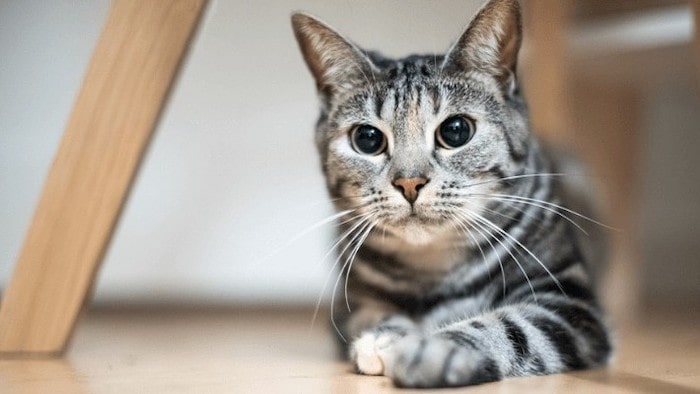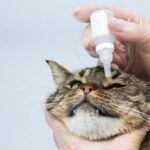If you’ve ever found yourself wondering, “Why is my cat’s eye-watering?” you’re in the right place. As cat owners, we all want to ensure our beloved companions are happy and healthy. One common issue that can cause concern is when our furry friends experience excessive tearing or watery eyes.
It’s essential to understand the reasons behind this phenomenon and how to address it. In this article, we will explore the potential causes of why your cat’s eyes may be watering and provide helpful insights and solutions to put your mind at ease.
So, let’s unravel the mystery together and learn how to keep your cat’s eyes clear, bright, and comfortable.
What Causes Eye-Watering in Cats?
The normal function of tears is to lubricate and protect the eyes from dust, debris, and infections. However, sometimes the tear production or drainage can be disrupted, leading to excessive tearing or watery eyes. This condition is also known as epiphora.
There are many factors that can cause epiphora in cats, such as:
- Allergies: Cats can be allergic to various substances, such as pollen, dust, mold, food, or flea bites. Allergies can cause inflammation and irritation in the eyes, resulting in watery eyes.
- Infections: Viral or bacterial infections can affect the eyes or the upper respiratory tract of cats, causing symptoms such as sneezing, nasal discharge, and watery eyes. Some common infections that can cause watery eyes in cats are feline herpesvirus (FHV), feline calicivirus (FCV), chlamydia, mycoplasma, and bordetella.
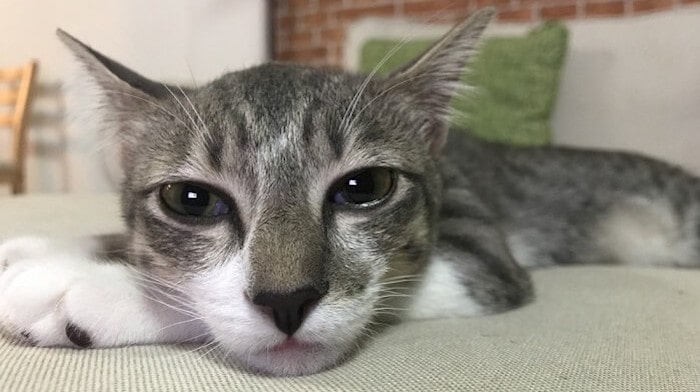
- Injuries: Trauma or injury to the eye or the surrounding area can cause damage to the cornea (the clear outer layer of the eye) or the eyelids. This can lead to pain, inflammation, and watery eyes. Some examples of injuries that can cause watery eyes in cats are scratches, ulcers, foreign bodies, or eyelash abnormalities.
- Tear duct disorders: The tear ducts are small tubes that drain the tears from the eyes to the nose. Sometimes, these ducts can become blocked or narrowed due to congenital defects, inflammation, infection, or tumors. This can prevent the normal drainage of tears and cause them to overflow from the eyes.
Common Reasons for Eye-Watering in Cats
As mentioned above, some of the most common reasons for eye-watering in cats are allergies, infections, and injuries. Let’s take a closer look at each of these causes and how they can affect your cat’s eyes.
Allergies
Allergies are an overreaction of the immune system to harmless substances that are perceived as threats. When your cat comes into contact with an allergen (the substance that triggers the allergy), their body produces histamine and other chemicals that cause inflammation and irritation in various parts of the body, including the eyes.
Some signs that your cat may have an allergy include:
- Watery eyes
- Redness or swelling around the eyes
- Itching or rubbing the eyes
- Sneezing or coughing
- Skin rashes or hives
- Vomiting or diarrhea
The most common allergens for cats are:
- Pollen: Pollen is a fine powder produced by plants that can be carried by wind or insects. Pollen can cause seasonal allergies in cats, especially during spring and summer.
- Dust: Dust is a mixture of tiny particles that can accumulate in your home or environment. Dust can contain various allergens, such as dust mites, mold spores, animal dander, or insect fragments.
- Food: Cats can be allergic to certain ingredients in their food, such as chicken, beef, fish, dairy products, wheat, corn, soy, or eggs. Food allergies can cause gastrointestinal problems as well as skin and eye issues in cats.
- Flea bites: Fleas are small parasites that feed on the blood of animals. Flea bites can cause an allergic reaction in some cats, leading to intense itching and skin lesions. Flea allergy dermatitis (FAD) is one of the most common skin conditions in cats.
Infections
Infections are caused by microorganisms that invade and multiply in the body of an animal. Infections can affect various organs and systems of cats, including the eyes and the upper respiratory tract.
Some signs that your cat may have an infection include:
- Watery eyes
- Yellow or green discharge from the eyes
- Crusting or sticking of the eyelids
- Squinting or blinking excessively
- Fever or lethargy
- Loss of appetite or weight
The most common infections that can cause watery eyes in cats are:
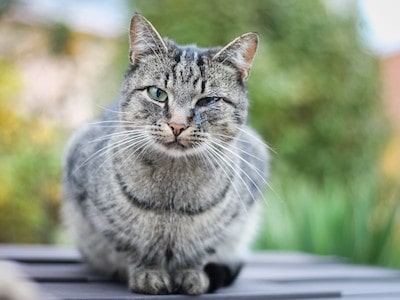
- Feline herpesvirus (FHV): FHV is a highly contagious virus that causes feline viral rhinotracheitis (FVR), a severe upper respiratory infection in cats. FHV can also affect the eyes of cats, causing conjunctivitis (inflammation of the lining of the eye), keratitis (inflammation of the cornea), or corneal ulcers (open sores on the cornea).
- Feline calicivirus (FCV): FCV is another highly contagious virus that causes feline calicivirus infection (FCI), a mild to moderate upper respiratory infection in cats. FCV can also affect the eyes of cats, causing conjunctivitis, keratitis, or corneal ulcers.
- Chlamydia: Chlamydia is a bacterial infection that causes feline chlamydiosis, a chronic conjunctivitis in cats. Chlamydia can also affect the nose and throat of cats, causing sneezing and nasal discharge.
- Mycoplasma: Mycoplasma is a type of bacteria that causes feline mycoplasmosis, a mild to moderate conjunctivitis in cats. Mycoplasma can also affect the nose and throat of cats, causing sneezing and nasal discharge.
- Bordetella: Bordetella is a type of bacteria that causes feline bordetellosis, a rare but serious upper respiratory infection in cats. Bordetella can also affect the eyes of cats, causing conjunctivitis.
Injuries
Injuries are physical damage to the body of an animal caused by external forces or objects. Injuries can affect various parts of the body of cats, including the eyes and the surrounding area.
Some signs that your cat may have an injury include:
- Watery eyes
- Blood or pus from the eyes
- Swelling or bruising around the eyes
- Pain or sensitivity to light
- Difficulty opening or closing the eyes
The most common injuries that can cause watery eyes in cats are:
- Scratches: Scratches are superficial wounds caused by sharp objects or nails. Scratches can affect the eyelids or the cornea of cats, causing bleeding, inflammation, and infection.
- Ulcers: Ulcers are deep wounds that penetrate the surface of the eye. Ulcers can be caused by scratches, foreign bodies, chemicals, or infections. Ulcers can affect the cornea of cats, causing pain, inflammation, and vision loss.
- Foreign bodies: Foreign bodies are any objects that enter or lodge in the eye or the surrounding area. Foreign bodies can be dust, grass seeds, insects, or other materials. Foreign bodies can irritate, scratch, or infect the eye of cats, causing watery eyes and other complications.
- Eyelash abnormalities: Eyelash abnormalities are any defects or disorders that affect the growth or position of the eyelashes. Eyelash abnormalities can be congenital (present at birth) or acquired (developed later in life). Eyelash abnormalities can cause the eyelashes to rub against the eye of cats, causing irritation, inflammation, and infection.
How to Treat Eye-Watering in Cats
The treatment for eye-watering in cats depends on the underlying cause and severity of the condition. Some cases may require home remedies and supportive care, while others may require veterinary intervention and medication.
Some home remedies and supportive care for eye-watering in cats include:
- Cleaning: Cleaning your cat’s eyes regularly can help remove any discharge or debris that may be causing irritation or infection. You can use a soft cloth or cotton ball moistened with warm water or saline solution to gently wipe your cat’s eyes from the inner to the outer corner.
You can also use a mild eye wash or artificial tears to rinse your cat’s eyes if needed. Do not use human eye drops or contact lens solutions as they may contain ingredients that are harmful to your cat’s eyes.
- Compressing: Compressing your cat’s eyes with a warm cloth or towel can help reduce swelling and inflammation. You can soak a cloth or towel in warm water and wring it out before applying it to your cat’s eyes for a few minutes. You can repeat this process several times a day as needed.
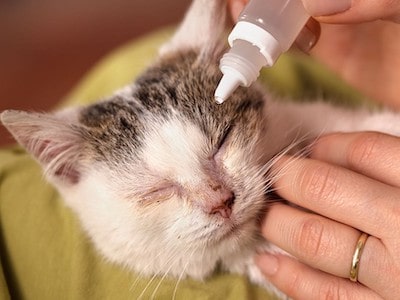
- Isolating: Isolating your cat from other pets and children can help prevent the spread of infection and reduce stress. You can keep your cat in a quiet and comfortable room with fresh water and food available. You can also provide your cat with toys and treats to keep them entertained and happy.
- Monitoring: Monitoring your cat’s condition closely can help you notice any changes or signs of improvement or worsening. You should check your cat’s eyes daily for any discharge, redness, swelling, pain, or vision problems. You should also monitor your cat’s appetite, weight, temperature, and behavior.
Some veterinary care and medication for eye-watering in cats include:
- Antibiotics: Antibiotics are drugs that kill or inhibit the growth of bacteria. Antibiotics can be prescribed by your veterinarian if your cat has a bacterial infection that is causing watery eyes. Antibiotics can be given orally (by mouth), topically (on the skin), or ophthalmically (in the eye).
- Antivirals: Antivirals are drugs that inhibit the replication of viruses. Antivirals can be prescribed by your veterinarian if your cat has a viral infection that is causing watery eyes. Antivirals can be given orally, topically, or ophthalmically.
- Antihistamines: Antihistamines are drugs that block the action of histamine, a chemical that causes allergic reactions. Antihistamines can be prescribed by your veterinarian if your cat has an allergy that is causing watery eyes. Antihistamines can be given orally or topically.
- Anti-inflammatories: Anti-inflammatories are drugs that reduce inflammation and pain. Anti-inflammatories can be prescribed by your veterinarian if your cat has an injury or infection that is causing watery eyes. Anti-inflammatories can be given orally, topically, or ophthalmically.
- Surgery: Surgery is a procedure that involves cutting or removing tissue or organs. Surgery can be performed by your veterinarian if your cat has a tear duct disorder, an eyelash abnormality, or a tumor that is causing watery eyes. Surgery can help restore the normal function or appearance of the eye or the surrounding area.
When to See a Vet for Eye-Watering in Cats
While some cases of eye-watering in cats may resolve on their own or with home remedies and supportive care, others may require immediate veterinary attention and treatment. You should see a vet for eye-watering in cats if you notice any of the following signs:
- Severe or persistent watery eyes
- Thick, yellow, green, or bloody discharge from the eyes
- Cloudy, hazy, or blue appearance of the eye
- Ulcers, scratches, or foreign bodies in the eye
- Swelling, bulging, or protrusion of the eye
- Squinting, blinking, or holding the eye closed
- Scratching, rubbing, or pawing at the eye
- Loss of vision or change in pupil size or shape
- Fever, lethargy, loss of appetite, or weight loss
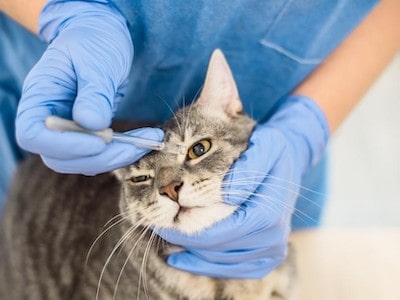
These signs may indicate a serious problem that could affect your cat’s health and vision. Some possible complications of eye-watering in cats are:
- Corneal ulceration: Corneal ulceration is a condition where the cornea becomes eroded or perforated due to trauma, infection, or inflammation. Corneal ulceration can cause severe pain, inflammation, and vision loss in cats.
- Keratoconjunctivitis sicca (KCS): KCS is a condition where the tear production is insufficient or abnormal, leading to dryness and irritation of the eye. KCS can cause chronic inflammation, infection, and scarring of the eye in cats.
- Glaucoma: Glaucoma is a condition where the pressure inside the eye becomes too high, damaging the optic nerve and other structures of the eye. Glaucoma can cause pain, redness, swelling, and blindness in cats.
- Uveitis: Uveitis is a condition where the uvea (the middle layer of the eye) becomes inflamed due to infection, trauma, immune-mediated disease, or cancer. Uveitis can cause pain, redness, sensitivity to light, and vision loss in cats.
FAQ
Are certain cat breeds more prone to eye-watering?
Yes, some cat breeds are more predisposed to tearing than others. Breeds with flatter faces, such as Persians and Himalayans, are prone to tear overflow due to their short nasal passages. However, eye-watering can affect any breed, so monitoring your cat’s eye health is essential for all feline owners.
Can my cat’s diet impact eye-watering?
Diet can play a role in your cat’s overall health, including their eye condition. Poor nutrition may weaken their immune system, making them more susceptible to eye infections. Providing a balanced diet with proper nutrients can help support your cat’s eye health.
Can I use over-the-counter eye drops for my cat’s watery eyes?
Never use over-the-counter eye drops or medications without veterinary guidance. Human eye drops may contain ingredients harmful to cats and could worsen their condition. Always seek professional advice before administering any medication to your cat.
How are cat eye-watering issues usually treated?
The treatment for eye-watering depends on the underlying cause. It could range from topical ointments or antibiotics for infections to flushing tear ducts for blockages or surgery for more severe issues. Your veterinarian will recommend the most appropriate treatment plan for your cat.
Final Thoughts
In conclusion, understanding why your cat’s eyes may be watering is essential for their overall well-being. Excessive tearing can be a symptom of various underlying causes, ranging from allergies and infections to more serious conditions. By identifying the root cause and seeking appropriate veterinary care, you can help alleviate your cat’s discomfort and ensure their eyes stay clear and healthy.
Remember to monitor your cat’s eye health regularly and seek professional advice if you notice persistent or concerning symptoms. Maintaining a clean environment, providing a balanced diet, and minimizing stress can also contribute to your cat’s eye health.
By being proactive and attentive to your cat’s needs, you can play an active role in promoting their ocular health. Remember, when it comes to your feline friend’s eyes, it’s always better to be safe than sorry.

